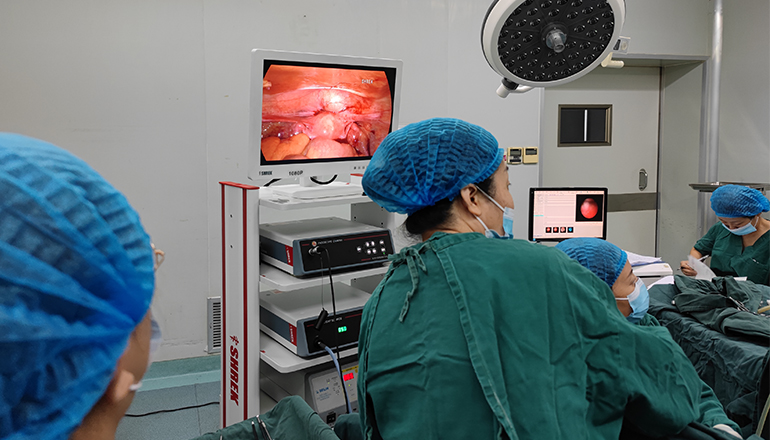- Shanghai, China
- [email protected]
- +86-21-58189111
Hysteroscopy surgery is a versatile procedure that can be used for both diagnostic and therapeutic purposes. Here are some of the applications of hysteroscopy surgery:
Diagnosis of abnormal uterine bleeding: Hysteroscopy surgery can be used to diagnose the cause of abnormal uterine bleeding, which may be caused by conditions such as uterine fibroids, endometrial hyperplasia, or polyps.
Evaluation of infertility: Hysteroscopy surgery can be used to evaluate the uterine cavity for potential causes of infertility, such as uterine adhesions, septums, or polyps.
Removal of uterine polyps: Hysteroscopy surgery can be used to remove uterine polyps, which are noncancerous growths in the lining of the uterus that can cause abnormal bleeding or fertility problems.
Treatment of uterine fibroids: Hysteroscopy surgery can be used to treat small uterine fibroids that are located inside the uterine cavity. This is done by using a laser or electrosurgical instrument to remove or destroy the fibroid tissue.

Treatment of uterine adhesions: Hysteroscopy surgery can be used to treat uterine adhesions, which are bands of scar tissue that can form inside the uterus after surgery, infection, or inflammation. The surgeon can use specialized instruments to remove or separate the adhesions, which can improve fertility and reduce the risk of miscarriage.
Treatment of uterine septum: Hysteroscopy surgery can be used to treat a uterine septum, which is a wall of tissue that divides the uterus into two separate cavities. The surgeon can use specialized instruments to remove the septum, which can improve fertility and reduce the risk of miscarriage.
Endometrial ablation: Hysteroscopy surgery can be used to perform endometrial ablation, which is a procedure that destroys the lining of the uterus to treat heavy menstrual bleeding.
Removal of intrauterine devices (IUDs): Hysteroscopy surgery can be used to remove a displaced or embedded IUD that cannot be removed through the cervix.
In summary, hysteroscopy surgery is a versatile procedure that can be used for both diagnostic and therapeutic purposes. It can be used to diagnose and treat a variety of gynecological conditions, including abnormal uterine bleeding, infertility, uterine polyps, uterine fibroids, uterine adhesions, uterine septum, and IUD removal. If you have a gynecological condition that requires surgery, talk to your doctor about whether hysteroscopy surgery may be an option for you.
Leave a Comments